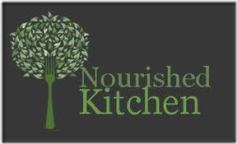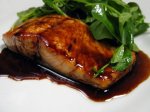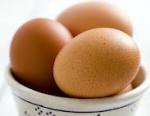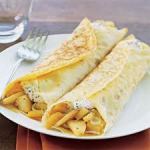What Should I Eat?
 Being a health care practitioner, I have come to believe that most of the health issues my patients are experiencing are to some degree related to their diet. I’m defining the word diet very broadly to mean “what you eat.” The health issues I started to experience while in my 20s were absolutely related to the way I ate. My health journey has evolved from being a junk-food vegetarian to eating the nutrient-dense whole foods diet I currently enjoy. Since it’s hard to know where to start when making dietary changes, here are some resources. This post will the first in a series addressing the question, “What should I eat?”
Being a health care practitioner, I have come to believe that most of the health issues my patients are experiencing are to some degree related to their diet. I’m defining the word diet very broadly to mean “what you eat.” The health issues I started to experience while in my 20s were absolutely related to the way I ate. My health journey has evolved from being a junk-food vegetarian to eating the nutrient-dense whole foods diet I currently enjoy. Since it’s hard to know where to start when making dietary changes, here are some resources. This post will the first in a series addressing the question, “What should I eat?”
I’ve always liked Michael Pollan’s quote, “Don’t eat anything your great-grandmother wouldn’t recognize as food.” My goal is to help people achieve that.
Fundamentally (and ideally), one’s diet should be nutrient dense, free of refined foods and sustain life rather than contributing to chronic/degenerative diseases such as heart disease, cancer, auto-immunity, Alzheimer’s, to name a few. The Paleo “diet” which is really a lifestyle, is a good place to start.
The Paleo/Primal lifestyle is for those seeking general health & wellness, weight loss, greater hormone balance, and longevity etc… Although the definition of “Paleo” is evolving (read a good article here), it is generally defined as gluten-free, dairy-free (controversial), healthy fats (including saturated fats), and plenty of vegetables with some fruit.
I like Diane Sanfilippo’s definition of Paleo in her book Practical Paleo. She writes, “the lifestyle is simply about (1)  eating whole foods that provide better fuel for your body and (2) avoiding processed, refined, nutrient-poor factory foods. This means avoiding grains, legumes (beans), refined sugar, and pasteurized dairy products. ”
eating whole foods that provide better fuel for your body and (2) avoiding processed, refined, nutrient-poor factory foods. This means avoiding grains, legumes (beans), refined sugar, and pasteurized dairy products. ”
Practical Paleo is a comprehensive, colorful, engaging resource outlining the Paleo lifestyle but also has great recipes. I recommend the book highly. Diane’s website is also a great resource with recipes, links to her podcasts, and general motivational help. She provides guides on her website detailing what to eat – very helpful.
The following website links are a good introduction into some of the more well-known Paleo authors. Once you peruse their sites, you can determine if you’d like to learn more in of the their books. This is not a comprehensive list but merely an introduction.
Loren Cordain aka the Founder of the Paleo Movement
 Paleo Meal Plans: The links listed below vary widely in what they offer for menus but are useful for those needing a bit more guidance on what to eat for each meal within the Paleo lifestyle.
Paleo Meal Plans: The links listed below vary widely in what they offer for menus but are useful for those needing a bit more guidance on what to eat for each meal within the Paleo lifestyle.
Next in the series, I’ll explore another nutrient-dense, whole-food diet/lifestyle based on the principles of Weston A Price. If you’re eager to learn more, you can visit the Weston A Price Foundation website.
Using Coconut as an Alternative to Dairy
 Many of my patients learn that they are sensitive to or allergic to dairy products. Although this can at first seem overwhelming, I’m hoping that the information in this article will help ease the transition and help them realize that being dairy-free can be tasty and nutritious!
Many of my patients learn that they are sensitive to or allergic to dairy products. Although this can at first seem overwhelming, I’m hoping that the information in this article will help ease the transition and help them realize that being dairy-free can be tasty and nutritious!
Retail products
Here are some options one is likely to find at a natural food store. They are convenient but have fillers in them that some might find hard to digest. I’m a big fan of homemade so most of this post is about making your own dairy-free food. 
So Delicious Coconut Ice Cream
 To make your own coconut milk:
To make your own coconut milk:
Mama Natural (video)
Coconut Milk Kefir: I recommend making coconut milk kefir over coconut milk yogurt for several reasons: it’s easier and has many more varieties of beneficial organisms (probiotics), yet it’s equally versatile.
Healthy Home Economist (video)
Coconut Milk Ice Cream Recipes
The Nourishing Gourmet Chocolate
Cheeseslave Chocolate
I had originally included recipes to make your own coconut milk yogurt but I haven’t tried it myself (whereas I have tried making coconut milk, coconut milk kefir and coconut milk ice cream) and it seems really labor intensive.
I’ve included many options but these links are just a smattering of what you can find online. Let me know if you have questions. Have fun exploring the world of being dairy-free.
Coconut Flour – Something Different to Bake With
Coconut flour is a great gluten-free alternative flour. I’ve been baking with coconut flour for several years, mainly because of its low-carbohydrate nature. Plus, I’ve enjoyed the creativity others have put into developing tasty recipes. Besides being a nice alternative to wheat flour, coconut flour has many benefits.
- Low in carbohydrates
- High in fiber
- Rich in protein
- Very filling
Keep in mind that since coconut flour is not grain based and contains no gluten, it does not perform like wheat flour. Because coconut flour is very absorbent, only small amounts are used. Sifting coconut flour is a good idea because it tends to clump. And lastly, coconut flour is dry so any recipe you see will require lots of eggs.
I have bought coconut flour at Whole Foods but I’ve found it less expensive to order online.
Tropical Traditions – they also have hundreds of recipes using coconut flour
I’ve even made my own coconut flour. Here’s how.
Most of the recipes I’ve used are sweet rather than savory recipes. I’ve made most of these recipes listed below.
Sweet Recipes
Strawberry Muffins with Strawberry Cream Cheese Frosting
Miscellaneous coconut flour recipes
Savory Recipes
Entrees
As a health care practitioner, I have evolved over my career regarding my thoughts on diet. But for the past few years, I have learned, appreciated and explored the world of traditional foods. My nutritional mentor for this is Weston A. 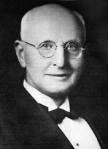 Price. Organizations such as the Weston A. Price Foundation and the Price Pottenger Nutrition Foundation have been instrumental in my education. In the past I’ve been a junk-food vegetarian, vegan (what was I thinking?), completely fat-free and a diet Coke addict. I’ve been recovering my health over the past few years and am feeling better than ever. I’ve learned that the human body can do just fine without grains (wheat, oats, rice, etc) but that we also need to eat fat in our diet. I remember the no/low fat craze of the 1990s and took that information to heart, only to end up gaining weight, dealing with depression, and having all over joint pain.
Price. Organizations such as the Weston A. Price Foundation and the Price Pottenger Nutrition Foundation have been instrumental in my education. In the past I’ve been a junk-food vegetarian, vegan (what was I thinking?), completely fat-free and a diet Coke addict. I’ve been recovering my health over the past few years and am feeling better than ever. I’ve learned that the human body can do just fine without grains (wheat, oats, rice, etc) but that we also need to eat fat in our diet. I remember the no/low fat craze of the 1990s and took that information to heart, only to end up gaining weight, dealing with depression, and having all over joint pain.
I’ve also learned that eating the way we did long ago i.e. no processed foods, vegetable oils, artificial sweeteners or food additives is best for the human body. I’ve included a few recipes below to get your started with ideas on food that is not only tasty but very healthy. I’ve only included a few recipes but encourage you to explore some of the blogs and websites by some pioneering and very creative traditional food advocates.
Some of my favorites include:
I’ve not tested all the recipes listed below but I’ve used recipes from the websites. One caveat is that if a recipe calls for low-fat cheese or sour cream, I recommend using whole fat instead. Organic is always better and raw is even better than that!
Chicken
Bacon, Chicken and Green Beans
Slow Cooker Chicken Tagine WithChickpeas And Root Vegetables
Beef
Mediterranean Beef Stew with Rosemary
Stuffed Zucchini with Beef, Rice, Pepper and Basil
Pork
Arugula, Bacon, & Cheddar Quiche (gluten free option available)
Pork Chops with Balsamic Glaze
Fish
Vegetarian
Nourishing, Tasty Salads
Salads can be so much more than the iceberg lettuce with thousand island dressing salads that I grew up with. The websites listed below epitomize salad creativity. To me, the most interesting salads contain a combination of vegetables, lettuces, meats, grains, or cheeses. The possibilities are endless. One caveat is that I always recommend making your own salad dressings. Commercial salad dressings are problematic because so many of them contain highly processed and/or rancid oils in addition to a variety of forms of MSG. A great introductory video on the “health” of salad dressings plus a tutorial on how to make your own, visit the Weston A Price Foundation website. I encourage you to be creative with your salads but if you are intimated on where to start, check out the following websites for an abundance of ideas.
up with. The websites listed below epitomize salad creativity. To me, the most interesting salads contain a combination of vegetables, lettuces, meats, grains, or cheeses. The possibilities are endless. One caveat is that I always recommend making your own salad dressings. Commercial salad dressings are problematic because so many of them contain highly processed and/or rancid oils in addition to a variety of forms of MSG. A great introductory video on the “health” of salad dressings plus a tutorial on how to make your own, visit the Weston A Price Foundation website. I encourage you to be creative with your salads but if you are intimated on where to start, check out the following websites for an abundance of ideas.
Kayln’s Kitchen is a vast resource for salad ideas. She has dozens of recipes for salads with vegetables, fruit, meat, grains, cheese, etc. I’ve tried many of her recipes and they were all so tasty!
 The Nourishing Gourmet has less traditional salads.
The Nourishing Gourmet has less traditional salads.
For the Foodie, Nourished Kitchen offers more gourmet salad options
Gnowfglins offers a variety of salads, including many gluten-free grain salads.
Fermented Veggies – Yum!
 Fermented foods, also known as cultured foods have been part of the human diet for millennia. However, due to modern food production as well as convenience foods, fermented foods are no longer dietary staples. Consequently, the human digestive tract and immune suffers. Whether somebody is suffering from frequent colds, Candida, auto-immune conditions such as Rheumatoid Arthritis, Crohn’s, Lupus or digestive distress including constipation, Irritable Bowel Syndrome or stomach bloating, fermented foods can be an integral part of the healing process with these disorders.
Fermented foods, also known as cultured foods have been part of the human diet for millennia. However, due to modern food production as well as convenience foods, fermented foods are no longer dietary staples. Consequently, the human digestive tract and immune suffers. Whether somebody is suffering from frequent colds, Candida, auto-immune conditions such as Rheumatoid Arthritis, Crohn’s, Lupus or digestive distress including constipation, Irritable Bowel Syndrome or stomach bloating, fermented foods can be an integral part of the healing process with these disorders.
In this blog post, I’ll be focusing on fermented vegetables but the world of fermented foods includes chutneys, salsas,  relishes, condiments like mustard, ketchup and mayonnaise, kefir, kombucha, yogurt, cheese, and sourdough grains. The world of fermented foods is abundant and alive (pun intended!)
relishes, condiments like mustard, ketchup and mayonnaise, kefir, kombucha, yogurt, cheese, and sourdough grains. The world of fermented foods is abundant and alive (pun intended!)
Originally people fermented foods as a way to preserve the harvest. However, the process of lacto-fermentation results in foods that not only are preserved long-term but also have increased digestibility and vitamin levels.
 During the process of fermentation, lactobacilli (bacteria) convert the sugars and starches in vegetables into lactic acid. Then the lactic acid preserves the food by inhibiting any putrefying bacteria.
During the process of fermentation, lactobacilli (bacteria) convert the sugars and starches in vegetables into lactic acid. Then the lactic acid preserves the food by inhibiting any putrefying bacteria.
In The Body Ecology Diet, author Donna Gates outlines several benefits of fermented veggies.
- They are a less expensive alternative to probiotics
- They improve digestion as the vegetables are pre-digested
- They contain enzymes to facilitate digestion, eliminate toxins, and boost the immune system
- Are great for controlling food cravings and assisting in weight control
Fermented vegetables are surprisingly easy to make and are much less expensive than buying them at a health food store. And you can make them according to your own tastes. It’s common to start making fermented veggies by using  cabbage alone or combining cabbage with other vegetables such as kale, carrots, radishes, ginger, turnips, beets, etc. The combinations are really endless.
cabbage alone or combining cabbage with other vegetables such as kale, carrots, radishes, ginger, turnips, beets, etc. The combinations are really endless.
Specific recipes and instructions can be found in the books and websites listed below. The recipes can be made using only salt but you can use a starter culture such as those available from Body Ecology or by using whey. If you’re in the Triangle area of North Carolina, I always have extra whey (left over from cheese making). Leave a comment on the blog and I’ll contact you.
I really encourage you to explore the world of fermented foods. I find that the more I eat, the more I crave them (believe it or not). I try to consume fermented foods at every meal whether that be kefir in my mornings smoothie, kombucha, sauerkraut, fermented carrots, sourdough bread, fermented salsa or chili sauce. Donna Gates recommends a ½ cup serving of fermented veggies with any meal that contains a protein or starch. I love the variety of foods and their life-sustaining benefits.
Resources
Books:
Nourishing Traditions by Sally Fallon
 Wild Fermentation by Sandor Ellix Katz
Wild Fermentation by Sandor Ellix Katz
The Body Ecology Diet by Donna Gates
Gut and Psychology Syndrome by Natasha Campbell-McBride M.D.
Online resources:
Nourished Kitchen Get Cultured e-Course
GNOWFGLINS Lacto-Fermentation e-Course
The “Wow” Factor of Coconut Oil
Coconut oil, like many saturated fats is misunderstood. However, since coconut oil is such a th erapeutic food, I want to start clearing up misconceptions. I’ve been using coconut oil myself and recommending it to patients for several years now and for many reasons. Bruce Fife, a certified nutritionist and naturopathic doctor, lists numerous therapeutic benefits of coconut oil in his book The Coconut Oil Miracle:
erapeutic food, I want to start clearing up misconceptions. I’ve been using coconut oil myself and recommending it to patients for several years now and for many reasons. Bruce Fife, a certified nutritionist and naturopathic doctor, lists numerous therapeutic benefits of coconut oil in his book The Coconut Oil Miracle:
- Prevents heart disease, high blood pressure, atherosclerosis & stroke
- Prevents diabetes and relieves the symptoms and health risks associated with the disease
- Supports the development of strong bones and teeth
- Protects against osteoporosis
- Promotes loss of excess weight
- Kills viruses that cause mononucleosis, influenza, hepatitis C, measles, herpes, AIDS, and other illnesses
- Reduce symptoms associated with pancreatitis
- Reduce severity of problems associated with malabsorption syndrome and cystic fibrosis
- Relieve symptoms of gallbladder disease
- Relieve symptoms associated with Crohn’s disease, ulcerative colitis, and stomach ulcers
- Relieve pain and irritation caused by hemorrhoids
- Reduce chronic inflammation
- Protect the body from breast, colon, and other cancers
- Prevent periodontal disease and tooth decay
- Prevent premature aginig and degenerative disease
- Relieve symptoms associated with chronic fatigue syndrome
- Relieve symptoms associated with benign prostatic hyperplasia
- Reduce epileptic seizures
- Protect against kidney disease and bladder infections
- Prevent liver disease
- Kill bacteria that cause pneumonia, earache, throat infections, dental cavities, food poisoning, urinary tract infections, meningitis, gonorrhea, and dozens of other diseases
- Kill fungi and yeast that cause candida, jock itch, ringworm, athlete’s foot, thrush, diaper rash, and other infections
- Expel or kill tapeworms, lice, giardia, and other parasites
- Ward off skin infections
- Reduce symptoms associated with psoriasis, eczema, and dermatitis
- Relieve dryness and flaking
- Prevent damaging effects of UV radiation from the sun such as wrinkles, sagging skin, and age spots
- Control dandruff
Wow, one food can do all of that!
Coconut oil can generally be found at natural food stores or online. I’ve been using Nutiva 
 for several years but Wilderness Family Naturals and Tropical Traditions are also a well-known online retailers of coconut oil.
for several years but Wilderness Family Naturals and Tropical Traditions are also a well-known online retailers of coconut oil.
There are many ways to incorporate coconut oil into your diet. Here are some of my personal favorites.
Check out this website with hundreds of coconut based recipes. The website contains recipes with other forms on coconut and in future blog posts, I hope to talk about the benefits of coconut milk and coconut flour. Enjoy.
Breakfast Ideas
 I regularly counsel patients not only on eating breakfast, but eating a nutrient-dense breakfast. Breakfast should be one’s biggest meal of the day for several reasons. As the name indicates, breakfast means “breaking the fast.” Upon waking in the morning, most people have not eaten for 8-12 hours. In order to properly fuel the body for the day (and not stress it out), breakfast is critical. However, many of my patients skip breakfast or eat a high carbohydrate breakfast. Feedback I’ve received from my patients is that when they have a healthy breakfast they have less food cravings during the day, have greater concentration and energy, plus they ultimately eat less during the day. Additionally, many sleep better at night!
I regularly counsel patients not only on eating breakfast, but eating a nutrient-dense breakfast. Breakfast should be one’s biggest meal of the day for several reasons. As the name indicates, breakfast means “breaking the fast.” Upon waking in the morning, most people have not eaten for 8-12 hours. In order to properly fuel the body for the day (and not stress it out), breakfast is critical. However, many of my patients skip breakfast or eat a high carbohydrate breakfast. Feedback I’ve received from my patients is that when they have a healthy breakfast they have less food cravings during the day, have greater concentration and energy, plus they ultimately eat less during the day. Additionally, many sleep better at night!
I’ve compiled a listing of some of my favorite foods to eat for breakfast. You don’t have to eat traditional breakfast foods for breakfast. Having chicken and veggies, soup, or meatloaf for breakfast is just fine. I encourage you not to be limited by tradition! I do believe that a nutrient-dense breakfast has more protein and fat than carbohydrates and that any  carbohydrates consumed should be complex i.e. veggies, fruit. You may notice that my list of recipes is almost entirely grain free. I believe people eat too many grains and that imbalances the body throughout the day. I’ve tried most of these recipes myself. I find them easy to prepare and yummy. Some recipes listed are dessert-like but since they are higher protein and less sugar, I feel good about including them here.
carbohydrates consumed should be complex i.e. veggies, fruit. You may notice that my list of recipes is almost entirely grain free. I believe people eat too many grains and that imbalances the body throughout the day. I’ve tried most of these recipes myself. I find them easy to prepare and yummy. Some recipes listed are dessert-like but since they are higher protein and less sugar, I feel good about including them here.
Breakfast Casserole with Spinach, Leeks, Cottage Cheese and Goat Cheese
Kale, Bacon, and Cheese Breakfast Casserole
Frittata with Bacon, Onions, and Cheese
Mexican Baked Eggs with Black Beans, Tomatoes, Chiles
Broccoli Cheese Breakfast Casserole
Black Bean and Egg BurritoApple & Spice Dutch Baby Pancake
Blueberry Clafouti (any fruit can be substituted)
Misc:
Dry Skin Brushing
Dry Skin Brushing
There are many ways to detoxify the body. But, why does the body need to detoxify? We are exposed to hundreds of chemicals on a daily basis. The chemical company DuPont coined the slogan “Better Things for Better Living…Through Chemistry” in 1935 as it was introducing chemicals and plastics to the world. DuPont was part of the emerging chemicalization of America. In her book, Hormone Deception, Lindsey Berkson, writes, “Since World War II  approximately 87,000 new chemicals have been synthesized in the U.S. alone. New ones are being invented at the rate of 2,000 per year.” The Center for Disease Control and Prevention reports that hundreds of these chemicals are present in our bodies and can interfere with the body’s immune, endocrine, nervous, and reproductive systems. These chemicals include air/water pollutants/caffeine, cigarette smoke, cosmetics, body care products, heavy metals, household cleaning products, pesticides/herbicides, plastics, pharmaceuticals, and preservatives. Wayne Ott, a long-term employee at the Environmental Protection Agency has said, “What the public doesn’t understand is that your house is the hazardous waste site. All of the things in your house are made from the same chemicals that are on the hazardous lists.”
approximately 87,000 new chemicals have been synthesized in the U.S. alone. New ones are being invented at the rate of 2,000 per year.” The Center for Disease Control and Prevention reports that hundreds of these chemicals are present in our bodies and can interfere with the body’s immune, endocrine, nervous, and reproductive systems. These chemicals include air/water pollutants/caffeine, cigarette smoke, cosmetics, body care products, heavy metals, household cleaning products, pesticides/herbicides, plastics, pharmaceuticals, and preservatives. Wayne Ott, a long-term employee at the Environmental Protection Agency has said, “What the public doesn’t understand is that your house is the hazardous waste site. All of the things in your house are made from the same chemicals that are on the hazardous lists.”
While it is best to minimize or eliminate your exposure to chemicals, detoxifying your body can help minimize the damaging effects of chemicals. In my opinion, the best way to detoxify the body is through the Standard Process Purification Program. However, there are daily activities you can do at home to strengthen your body. Castor Oil is very helpful as well as dry skin brushing.
Dry skin brushing is a simple and easy way to help detoxify the body. The skin is the largest organ in the body and plays a major role in body detoxification – as much as one-fourth of the body’s daily detoxification. Many refer to the skin as the “3rd Kidney” because of the skin’s powerful detoxification ability. However, body care products such as body  soap/lotion, deodorant, sunscreen, and synthetic fabric like polyester can not only prevent the skin from breathing appropriately but also block the ability of the skin to release toxins. When this happens, the toxic burden on the liver and kidney increase as well.
soap/lotion, deodorant, sunscreen, and synthetic fabric like polyester can not only prevent the skin from breathing appropriately but also block the ability of the skin to release toxins. When this happens, the toxic burden on the liver and kidney increase as well.
The best type of brush for dry skin brushing is one with a long handle and natural bristles. The brush should always remain dry for the best effect.  Natural food stores usually sell this type of brush. I recommend dry skin brushing in the morning before bathing. Start by brushing the feet, then up the legs, the back, the belly and into the chest. It is most beneficial to brush toward the heart as this facilitates proper lymph flow. The body’s lymphatic system is an important toxin removal system. As you reach the mid-chest, then brush up the arms, down the neck and into the mid-chest. Avoid any area in which the skin is broken or irritated. Do not brush your face. Brush gently but firmly. It may take a few treatments to get used to the natural bristles. The process takes less than 5 minutes. After completing the brushing, shower off the dea
Natural food stores usually sell this type of brush. I recommend dry skin brushing in the morning before bathing. Start by brushing the feet, then up the legs, the back, the belly and into the chest. It is most beneficial to brush toward the heart as this facilitates proper lymph flow. The body’s lymphatic system is an important toxin removal system. As you reach the mid-chest, then brush up the arms, down the neck and into the mid-chest. Avoid any area in which the skin is broken or irritated. Do not brush your face. Brush gently but firmly. It may take a few treatments to get used to the natural bristles. The process takes less than 5 minutes. After completing the brushing, shower off the dea d skin cells. Generally one will feel more alert
d skin cells. Generally one will feel more alert
Detoxification is not the only reason to dry skin brush. Many report that dry skin brushing softens the skin and can help with in-grown hairs. However, one of my favorite reasons for dry skin brushing is that it feels good!
Whole Body Purification
![ccw[1]](https://restoringwellness.files.wordpress.com/2011/05/ccw1.png?w=595) Center for Chiropractic and Wellness is hosting a workshop next Wednesday, May 11 on the Purification Program from Standard Process. We’ve been using this powerfully effective detoxification program in our office for several years now and we invite you to learn more.
Center for Chiropractic and Wellness is hosting a workshop next Wednesday, May 11 on the Purification Program from Standard Process. We’ve been using this powerfully effective detoxification program in our office for several years now and we invite you to learn more. ![]()
You may be asking yourself, “Why do I need the Purification Program?” Unfortunately we live in a toxic environment. We are exposed to environmental and internal toxins on a daily basis. Here are some unfortunate statistics:
- Approximately 87,000 new chemicals have been created and introduced into our environment in the US since World War II.
- Two thousand new chemicals are added every year! Additionally, tap water is contaminated with chlorine, trihalamethanes (environmental pollutants), lead, cadmium, plus medications and hormones.

- Body care products such as shampoo, shaving cream, deodorant, makeup, hair styling products, sunscreen, and perfume contain xenohormones. These hormone-like chemicals wreak havoc on the body’s hormones, nervous system, and general cellular function.
- The average American home contains over 60 hazardous products, most of which are lawn/garden and cleaning supplies.
- The average American consumes 14 lbs of food additives, 160 lbs of sugar, 8 lbs of salt in a given year.
I could go on but needless to say, we live in an environment that is not conducive to health!
But other reasons why patients choose to do the Purification Program is that they want to feel better. So many people are plagued with weight gain, brain fog, allergies, insomnia, acne, menstrual irregularities, poor digestion, sugar and/or salt cravings, pre-diabetes, eczema, low libido, etc. The purpose of the Purification Program is to stimulate the liver, kidneys, small intestine and large intestine so as to allow the body to lighten it’s toxic load and cleanse itself from the inside out.
The Purification Program is a 21-day cleanse that involves eating whole, organic (if possible), unprocessed  foods, taking whole-food supplements and drinking plenty of water (filtered or spring). We have scores of recipes available to help patients create flavorful and exciting food during the cleanse.
foods, taking whole-food supplements and drinking plenty of water (filtered or spring). We have scores of recipes available to help patients create flavorful and exciting food during the cleanse.
The Purification Program is also backed by research demonstrating it as an effective tool to lessen cardiovascular disease risk. Research published in the Journal of Chiropractic Medicine (September 2008) reported a total cholesterol decrease of 47 points after the 28 patients in the study completed the 21-day Purification Program. Additionally the patients experienced decreases in triglycerides, LDL, HDL, and VLDL cholesterol during the program. As an added benefit, weight loss was also noted for all 28 patients! To read the research article, please click here.
That has been our experience at CCW as well. Last week I spoke with several patients who had recently finished the Purification Program. One woman lost 15 pounds and her heel pain disappeared. Another female patient lost 8 pounds, had clearer skin and resumed a “regular” menstrual cycle, which previously had been absent. Other patients of mine have reported being pulled out of depression, sleeping better, increased energy, decreased allergies, regular bowel movements, improved digestion, clearer thinking, increased vitality, mood stability and a general positive outlook.
Even if you are unable to attend the workshop but are interested in the Purification Program, please call us at 919-845-3280. Here’s to your health!



